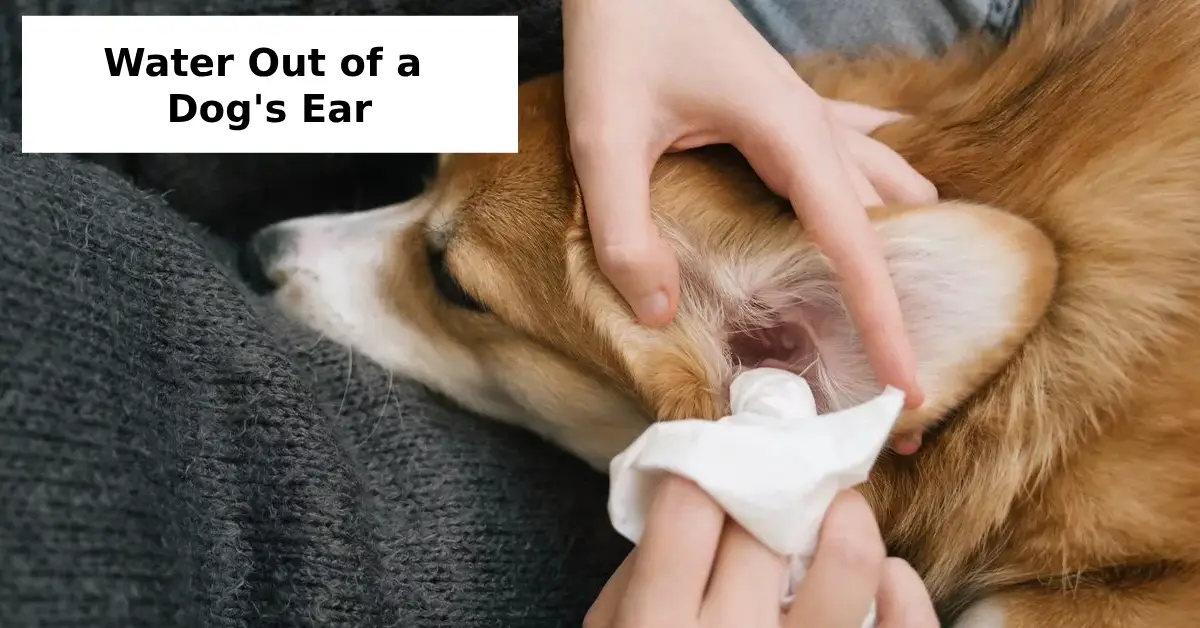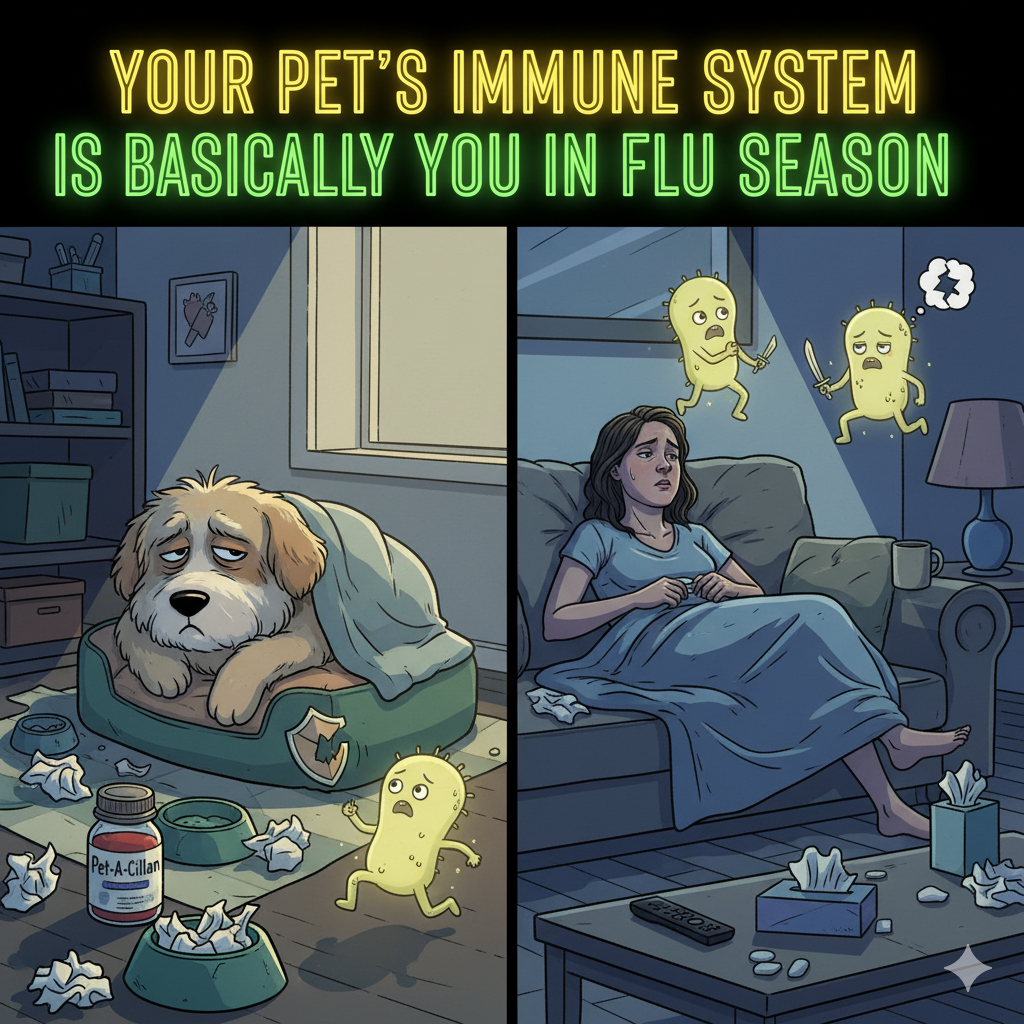Getting water out of a dog’s ear might seem like a minor issue, but if left unaddressed, it can lead to serious complications such as infections, discomfort, and even long-term damage. Whether your dog just had a bath, went swimming, or got caught in the rain, it’s crucial to ensure their ears are properly dried to avoid problems like dog ear infection from water.
This blog is a go-to guide for dog owners, pet parents concerned about dog ear infections, and even first-time puppy owners. Here, you’ll discover how to recognize the signs of water trapped in your dog’s ear, the safest ways to remove it, and how to prevent it from happening in the future.
Why Water in a Dog’s Ear Is a Problem
Dogs’ ears—especially floppy-eared breeds—are sensitive and prone to moisture buildup. When moisture gets trapped inside the ear canal, it creates a perfect breeding ground for bacteria and yeast, leading to painful infections.
This is often seen when dog shaking head after bath becomes a regular behavior. If your pup continues to scratch, shake, or tilt their head, it might be a sign of water stuck in dog’s ear symptoms.
Common signs include:
- Frequent head shaking
- Scratching or pawing at the ear
- Redness or swelling
- Foul odor from the ear
- Whining or signs of discomfort
How Do You Get Water Out of a Dog’s Ear?
Removing water out of a dog’s ear safely and quickly is essential. Here’s a step-by-step method that works for most dogs:
Step 1: Use a Soft, Clean Towel
After a bath or swim, immediately dry your dog’s outer ears using a soft towel. Gently pat around the ear flap (pinna) and opening of the ear canal. Avoid inserting the towel inside the ear.
Step 2: Let Gravity Help
Tilt your dog’s head so the ear with water is facing downward. Gently massage the base of the ear, encouraging water to flow out naturally. Many dog groomers and pet sitters use this technique after grooming.
Step 3: Use an Ear Drying Solution
There are several best dog ear drying solution options available over the counter. These solutions are designed to evaporate moisture quickly and are often alcohol-based (safe for pets in small, controlled doses).
One or two drops in the affected ear can make a big difference. Always follow label instructions and consult your vet if unsure.
Step 4: Try Natural Remedies (with Caution)
Some remedies for water in dog’s ear include apple cider vinegar (diluted) or witch hazel. While these can help dry out the ear, they should never be used on dogs with open wounds or visible irritation. Pet care enthusiasts searching for at-home remedies should consult a vet before trying DIY treatments.
What Not to Do When Your Dog Gets Water in Their Ear
- Don’t use Q-tips or cotton swabs inside the ear canal. This can push water deeper or damage the eardrum.
- Don’t ignore signs of infection or prolonged discomfort.
- Don’t delay treatment if symptoms persist more than 24-48 hours.
How to Prevent Water from Getting in Your Dog’s Ear
Prevention is always better than cure. Here’s how to avoid water buildup and possible infections:
1. Use Dog Ear Protection
Consider using canine earplugs or doggy shower caps for bath time or swimming sessions. These are especially helpful for dog owners who bathe or swim their dogs frequently.
2. Keep Ears Dry After Baths or Swims
Make how to dry dog ears after swimming a regular part of your post-bath routine. Dry both the outer and visible parts of the inner ear gently.
3. Clean Ears Regularly
Regular dog ear cleaning at home using vet-approved cleaners can help prevent infections and remove dirt and wax buildup. Clean once a week or as recommended by your veterinarian.
4. Trim Hair Around Ears
Dogs with long hair near the ears are more prone to water trapping. Trim the hair carefully or have it done professionally during grooming sessions.
5. Monitor for Signs of Infection
Early detection is key. Stay alert to the early signs of dog swimmer’s ear treatment needs like frequent head shaking or redness inside the ear.
When to See a Vet
If your dog continues to show signs of discomfort, or if symptoms like odor, discharge, or swelling appear, it’s time to visit the vet. Can water hurt a dog’s ear? Absolutely—especially if it leads to infection or if left untreated.
Veterinarians can diagnose infections, remove debris, and prescribe antifungal or antibacterial ear drops. Chronic ear infections may require longer treatment plans or underlying allergy testing.
Frequently Asked Questions
Can I Use a Blow Dryer to Dry My Dog’s Ears?
No. Blow dryers can burn the delicate inner ear and worsen moisture if not used correctly. Always use a towel or vet-approved drying solution.
Are Certain Breeds More at Risk?
Yes. Breeds with floppy ears like Cocker Spaniels, Golden Retrievers, and Basset Hounds are more prone to ear infections from trapped moisture.
How Often Should I Clean My Dog’s Ears?
For most dogs, once a week is ideal. But dogs who swim or get wet often might need more frequent cleanings.
Final Thoughts
Learning how to get water out of a dog’s ear is an essential part of responsible pet care. Whether you’re a first-time puppy owner or a seasoned dog groomer, understanding the risks of trapped moisture and how to handle it can save your furry friend from a lot of pain and you from costly vet bills.
Here’s a quick checklist for your dog’s next bath or swim:
✅ Use a soft towel to dry ears
✅ Tilt the head to let water out naturally
✅ Apply an ear drying solution if needed
✅ Watch for any discomfort or signs of infection
✅ Avoid using cotton swabs inside the ear
By being proactive, you can reduce the risk of dog ear infection from water and ensure your pet stays happy, healthy, and infection-free.
Remember: Healthy ears are happy ears! Taking a few minutes to dry and inspect your dog’s ears after every bath or swim can go a long way in preventing discomfort and keeping your pup playful.
If you’re a pet care enthusiast searching for at-home remedies, always consult your veterinarian before trying new solutions. And for all dog owners out there—regular ear checks should be as routine as belly rubs!





